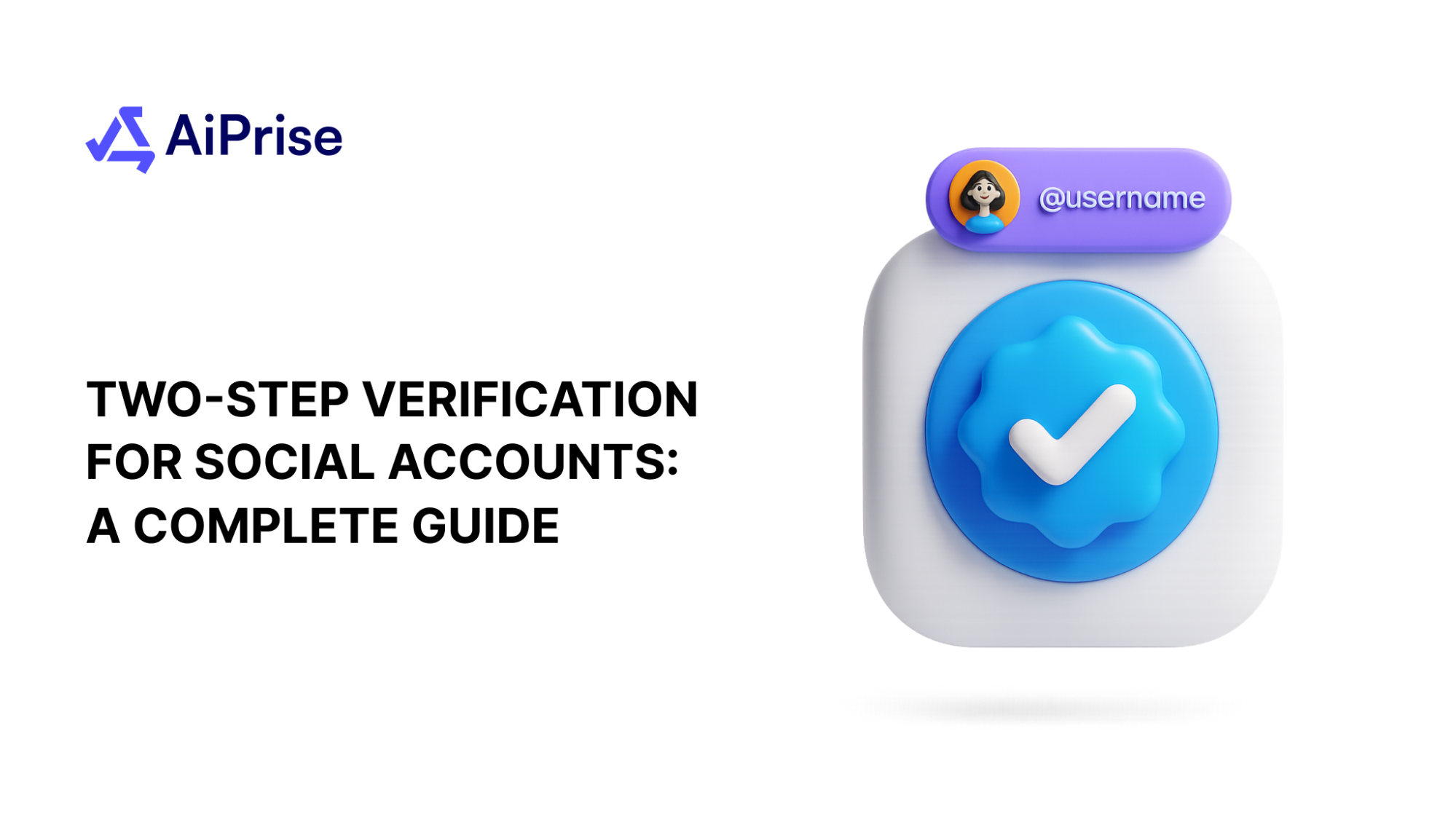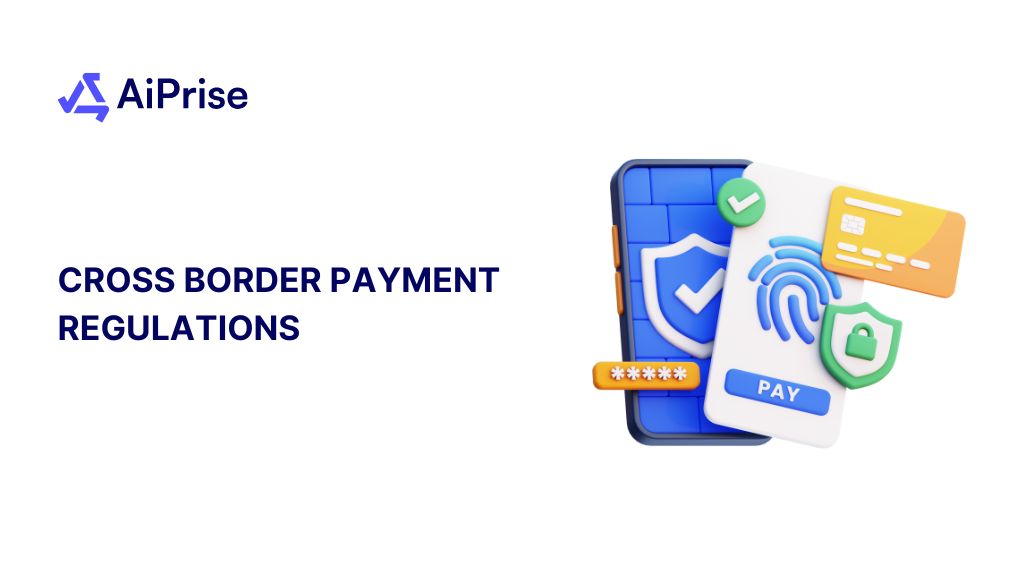AiPrise
9 min read
October 29, 2025
Navigating Cross Border UBO Identification and Compliance

Key Takeaways










Sanctions evasion, trade-based laundering, and layered holding companies now span multiple jurisdictions. Supply chains and vendor networks are global, so one hidden UBO can trigger fines, offboarding, and reputational loss across regions.
In fact, TD Bank agreed to pay $3 billion, and BitMEX was fined $100 million for AML lapses tied to weak ownership controls. This shows that regulators are signaling zero tolerance.
This blog will provide a clear understanding of UBO risk signals, highlighting cross-jurisdictional twists that create blind spots.
Key Takeaways
- Understand what cross-border UBO identification means, why thresholds vary, and how control can hide across entities.
- Recognize the biggest hurdles: opaque structures, weak registry data, language issues, and conflicting disclosure rules.
- Apply a signals framework covering legitimacy, ownership links, geography risk, financial activity, and operational footprints.
- Follow a workflow for intake, entity resolution, risk scoring, EDD triggers, decisioning, and continuous monitoring.
- Use a UBO connectivity graph to reveal hidden influence paths and deliver explainable, auditable decisions.
What Is a Cross-Border UBO Identification?
A cross-border UBO identification is the process of checking the individuals who ultimately own or control a company that operates across multiple jurisdictions. Regulators usually set ownership or control thresholds, commonly 25% or more.
This is to define who qualifies as an Ultimate Beneficial Owner (UBO). The complexity arises when businesses span borders. Ownership chains often involve layered entities, nominee directors, or offshore jurisdictions with opaque disclosure rules.
This makes it harder to map control structures and ensure compliance, as obligations can differ drastically between regions like the U.S., EU, and offshore financial centers.
Most compliance teams can trace ownership within one jurisdiction. The real challenge begins when entities span borders, where disclosure rules shift and hidden risks multiply.
Why Cross-Border UBO Checks Are Essential in KYB
Cross-border ownership hides who controls a business. Sanctions exposure changes by country and can shift overnight. Weak registries and nominee layers increase blind spots. Without cross-border UBO checks, onboarding decisions miss material risk.
- Foreign ownership can conceal sanctioned parties or shell companies. Cross-referencing multiple registries reduces blind spots.
- Complex chains route control through low-disclosure hubs. Graphing links and testing control by “other means” exposes hidden influence.
- FATF standards expect the identification of ultimate owners across jurisdictions. EU AMLDs and U.S. FinCEN rules add local obligations on top.
- Regulators expect proof, not claims. Keep evidence of registry pulls, sanctions screening, and your rationale for thresholds and EDD.
Also Read: Challenges And Solutions In Cross-Border Identity Verification
UBO verification in the U.S. has evolved gradually, driven by gaps exposed in financial crime cases. But the introduction of UBO reflects a move from partial disclosure to a standardized, enforceable framework.
Historical Evolution of UBO Verification in the United States
Before 2016, banks collected limited ownership information, leaving shell companies unchecked. The FinCEN CDD Rule (2016) was the first to mandate disclosure of beneficial owners with 25% or more ownership or control.
With the Corporate Transparency Act (CTA) of 2021, U.S. entities are now required to report their UBOs to FinCEN. Starting in 2024, covered companies must file beneficial ownership reports. This gives regulators a clearer picture of who truly controls U.S.-registered businesses.
Hidden owners rarely sit in plain sight across borders. To surface them, you have to confront the practical hurdles that block clear UBO visibility.
Key Challenges in Cross-Border UBO Checks
Cross-border ownership adds opacity at every step. Data quality, legal definitions, and document standards vary by country. These gaps slow onboarding and weaken risk decisions.

- Multiple layers of holding companies and trusts: Complex chains split ownership across jurisdictions and vehicles. Control can sit with a trustee, protector, or nominee, not the named shareholder. You must trace legal rights, voting control, and beneficiaries, not just equity percentages.
- Inconsistent definitions and thresholds: Countries set different UBO thresholds and tests for “control.” Your policy must normalize these rules so decisions remain consistent across markets.
- Data reliability: Many registries update slowly or accept unverified submissions. Corporate filings can be missing, redacted, or out of date. Cross-check against multiple sources and retain evidence of recency to avoid relying on stale records.
- Language, legal, and document authenticity: Filings arrive in local languages with differing legal terms. Document formats, seals, and apostilles vary, which complicates authenticity checks.
Use verified translations and template-based validation to confirm content and provenance.
Also Read: Ultimate Beneficial Owner (UBO) Requirements and Risks
When ownership spans borders, the usual KYB checks are not enough. You need sharper signals tailored to cross-jurisdiction risks to see who truly controls the entity.
Risk Signal Categories for Cross-Border UBO Checks
Cross-border ownership needs sharper evidence than domestic reviews. Signals should prove legal existence, real control, and the path of funds across jurisdictions. Use multiple sources and keep proof of recency to avoid stale data.
- Legitimacy & registry signals: Check filings in each country where the group operates. Confirm cross-jurisdiction registration, status, and matching names, numbers, and addresses.
- Ownership & control signals: Map indirect control through subsidiaries, trusts, or proxies. Look for nominee roles and cross-entity links that shift voting power without equity.
- Financial signals: Review cross-border loans, intercompany flows, and guarantees. Unusual routes or circular payments can mask beneficial ownership or sanctions evasion.
- Operational footprint: Verify foreign domains, subsidiary websites, and local presence. Misaligned content or missing local details can indicate front or shelf entities.
- Geography & sector: Flag jurisdictions with weak disclosure or secrecy laws. Combine this with sector risk to prioritize EDD where controls are thin.
- Device & behavioral signals: Track multi-country IPs, login patterns, and email domains. Repeated switching or region-hopping may signal obfuscation during onboarding.
- Pattern signals: Look for shared addresses or directors across countries. Repeated UBOs tied to many entities can indicate a coordinated network.
Spotting signals is only the start. Turning them into a reliable process requires a workflow that can handle fragmented data and complex ownership chains across borders.
How to Build a Cross-Border UBO Verification Workflow
Cross-border UBO verification is not about checking one registry. It requires combining inputs from multiple jurisdictions, resolving conflicts, and creating an audit-ready record. A structured workflow makes these checks scalable and defensible.

- Data intake: Pull records from local registries, shareholder registers, and trust documents. Collect notarized or apostilled documents where required by local law.
- Entity resolution & global matching: Consolidate records across countries to remove duplicates. Link variations in names, addresses, and IDs to build a single global view of the entity.
- Weighted scoring and thresholds: Apply scoring models that account for cross-border risks. Set lower thresholds for EDD when entities span high-risk jurisdictions.
- Decisioning with EDD triggers: Route cases for enhanced review if control crosses borders. Extra checks should cover foreign PEP exposure, nominee directors, or secrecy jurisdictions.
- Ongoing monitoring: Track changes in ownership, sanctions, or filings globally. Use cross-jurisdiction alerts and refresh documents to keep records current.
- Checklist: Retain local registry extracts, translated shareholder proofs, sanctions logs, and reviewer notes. These artifacts create a defensible audit trail for regulators.
When entities operate across borders, ownership rarely sits in a straight line. It often runs through chains of trusts, holding firms, and offshore shells. This is where a UBO connectivity graph becomes essential.
The “UBO Connectivity Graph” for Cross-Border Visibility
Complex ownership webs are nearly impossible to understand in spreadsheets. A graph-based approach turns scattered filings and disclosures into a connected structure, making hidden influence visible and defensible.

- Entity representation: Each company, shareholder, trust, or jurisdiction is mapped as a node, with edges showing ownership or control relationships.
- Connectivity metrics: Graph algorithms highlight patterns like indirect control, unusual clustering, or paths that link to high-risk regions.
- Regulatory snapshots: Each verification event is stored as a frozen graph view, enabling auditors and regulators to trace how decisions were made at that point in time.
- Explorable networks: Compliance teams can visually navigate ownership layers across borders, reducing blind spots and improving confidence in onboarding decisions.
Also Read: Understanding UBO Registry And Beneficial Ownership Compliance
AiPrise, with its many beneficial features, helps you gain a clear and comprehensive view of your customer's ultimate beneficial owners. This allows you to know exactly who you're dealing with.
How AiPrise Helps Face the Cross-Border UBO Problem?
Cross-border ownership creates gaps in data, language, and access. AiPrise connects official registries, documents, screening, and monitoring in one place. Your team gets faster, auditable answers on who controls an entity.
- Global registry coverage: Pull official filings and status from multiple jurisdictions in a single workflow. Match names, numbers, and addresses across countries with evidence.
- UBO discovery and verification: Map indirect ownership and confirm declared UBOs with KYC and Proof of Address. Step up checks when risk, jurisdiction, or structure demands it.
- Government verifications: Validate registration, licenses, and tax IDs against authoritative sources. Close gaps from stale or self-reported data with fresh pulls.
- Document Insights: Extract names, roles, dates, and numbers from corporate documents at scale. Support multi-language inputs and run tamper checks where needed.
- Watchlist screening: Screen entities and UBOs against sanctions, PEPs, and adverse media in real time. Surface hits with source links and context for rapid review.
- Case Management: Route EDD cases, capture reviewer notes, and preserve decisions and evidence. Create a consistent, audit-ready trail for each onboarding.
- Workflows: Orchestrate intake, UBO attestations, scoring, and escalation by policy. Standardize actions across products and regions with configurable rules.
- Online presence analysis: Verify foreign domains, websites, and social signals for local footprints. Flag mismatches that suggest fronts, shelf companies, or misrepresentation.
- Dynamic risk scoring: Weight jurisdiction, sector, ownership opacity, and data quality. Backtest thresholds and tune actions without rebuilding flows.
- Ongoing monitoring and reverification: Track ownership changes, new sanctions, and fresh filings globally. Schedule document refreshes and trigger reverification on risk events.
- Onboarding SDK: Collect UBO attestations and documents in a branded, low-friction flow. Save and resume long submissions to reduce drop-offs.
- Single integration: Connect data sources and automate tasks through a single platform. Reduce vendor sprawl and simplify cross-border compliance at scale.
Conclusion
Cross-border UBO checks matter because control often hides behind layered entities, nominee roles, and secrecy jurisdictions. The right signals must be scored together, and a clear workflow keeps reviews fast and defensible.
Checks must stay dynamic as sanctions, filings, and structures change. A graph view of entities, people, and jurisdictions exposes indirect control and makes decisions explainable.
AiPrise connects with 100+ credit unions, government databases, phone registries, voter registries, and private databases globally to get you a match on any individual anywhere. AiPrise offers features that help you simplify your compliance process with rapid KYC checks of UBOs, completed in under 30 seconds.
Book A Demo to see AiPrise’s cross-border UBO toolkit.
FAQs
Q1. What qualifies as cross-border UBO checks?
A1. Ownership verification that traces control across multiple countries. It links entities, people, and trusts using foreign registries and documents. It confirms who ultimately benefits or controls, regardless of where they sit.
Q2. Can UBO rules differ from country to country?
A2. Yes. Thresholds for ownership or “control by other means” vary, as do disclosure and access rules. Your policy must normalize these differences so decisions stay consistent.
Q3. What documents do cross-border UBO checks require?
A3. Local registry extracts, shareholder registers, and trust deeds, where applicable. Verified government IDs and Proof of Address for UBOs or controllers. Notarized or apostilled copies and certified translations when required.
Q4. How reliable are global UBO registers?
A4. Reliability is uneven. Many rely on self-reported data, limited verification, or delayed updates. Cross-check with multiple sources and keep evidence of recency to reduce errors.
Q5. How often should cross-border UBOs be reviewed?
A5. Continuously, with event-driven updates for filings, sanctions, or ownership changes. Add periodic reviews based on risk tier, jurisdiction, and sector exposure. Continuous monitoring plus scheduled refreshes works best.
You might want to read these...

Aiprise has helped streamline our KYB (Know Your Business) flow in 100+ countries. No other tool comes close.





Speed Up Your Compliance by 10x
Automate your compliance processes with AiPrise and focus on growing your business.












